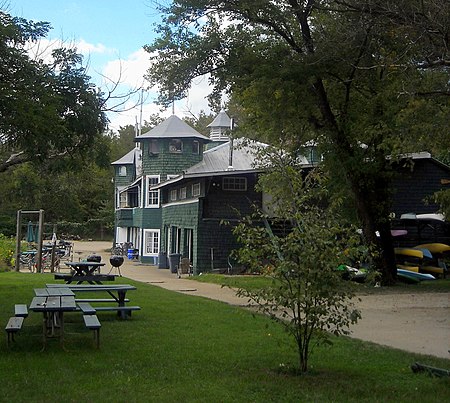Washington Canoe Club
1904 establishments in Washington, D.C.Buildings and structures completed in 1904Canoe clubs in the United StatesClubhouses on the National Register of Historic Places in Washington, D.C.Event venues on the National Register of Historic Places in Washington, D.C. ... and 3 more
Georgetown (Washington, D.C.)Sports venues on the National Register of Historic PlacesWashington, D.C. Registered Historic Place stubs

The Washington Canoe Club is a boat club on the Potomac River. It is located at 3700 K Street, Northwest, Washington, D.C., in the Georgetown neighborhood. It was established in 1904. The Canoe Club was listed in the National Register of Historic Places in on March 19, 1991.
Excerpt from the Wikipedia article Washington Canoe Club (License: CC BY-SA 3.0, Authors, Images).Washington Canoe Club
Capital Crescent Trail, Washington Georgetown
Geographical coordinates (GPS) Address External links Nearby Places Show on map
Geographical coordinates (GPS)
| Latitude | Longitude |
|---|---|
| N 38.904444444444 ° | E -77.072222222222 ° |
Address
Washington Canoe Club
Capital Crescent Trail 3700
20057 Washington, Georgetown
District of Columbia, United States
Open on Google Maps








